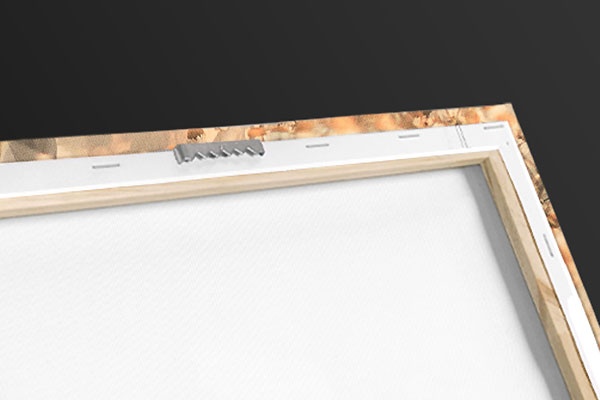Fishing Boats Moored In The Harbour, 1869 Wall Art
16″ × 12″ Stretched Canvas Print
About the Artist
Edgar Degas
Edgar Degas was a 19th-century French painter and sculptor known for depicting realistic movement. His chosen subjects were typically women and, in particular, ballet dancers. Degas's oil paintings and pastels remain some of the most breathtaking examples of Impressionism from the era.
Who was Edgar Degas?
Edgar Degas was born into a wealthy Parisian family in 1834. As a classically trained artist, his early works focused on historical subject matter and traditional portraits. However, by the 1860s, he had forged relationships with luminaries like Edouard Manet, Claude Monet, and Pierre-Auguste Renoir.
These friendships would profoundly impact his work, and by the 1870s, he was ensconced in the Impressionist movement and a key part of the Society of Independent Artists. However, he didn't readily associate himself with style and preferred to refer to his works as a "realist."
What are the characteristics of Edgar Degas wall art?
Women were far and away, Degas's favorite subject matter. His early work at Impressionist exhibitions included stunning portraits of women in various scenes, as cabaret and ballet dancers or working as laundresses or milliners. His use of unusual or unconventional perspectives makes these oil paintings stand out, even today.
Degas' work and subject matter portray a France in social flux. As women entered the workplace en masse, he sought to capture this moment in time with his keenness for realism. Later in life, Degas would exhibit a collection of nudes that caused much consternation in France, with some critics denouncing the subjects as ugly. However, when viewed from a modern perspective, these works exude a vulnerability and authenticity presented without edifice.
Unlike his Impressionist contemporaries, Degas had little interest in en plein-air painting of landscapes and outdoor scenes. While his work contains the light color palette, simple compositions, and brushstrokes associated with Impressionist painting, his subject matter was far more radical.
How to choose Edgar Degas canvas art?
Degas painted around 1500 pictures of ballet dancers that explore the movement of the human body through unique poses and nontraditional perspectives. While his career was long and spanned different styles, these works stand out against his earlier, more static work.
Many consider the 1870s as the high point of his career. Works such as “In a Café” (1878), “Ballet Rehearsal” (1873), and “The Ballet Class” (1874) are among his most celebrated pieces.
Edgar Degas's canvas art has an inimitable style. The work is delicate and unassuming, which lends itself to traditional or modern design schemes. His best works are an excellent gift for friends or family interested in ballet or the arts. Browse our extensive collection of Edgar Degas wall art to find a piece that resonates with you.
Product Specifications
- Expertly Handcrafted
- 1.25" Solid Wood Stretcher Bars
- Artist-Grade Canvas
- Fade-Resistant Archival Inks
- Hanging Hardware Pre-Installed
- Width: 16″
- Height: 12″
Item # 2930522
Product Features
Elevate any room with our handcrafted stretched canvas gallery wraps. Printed with archival inks and wrapped around a 1.25” inch solid wood stretcher bar, our giclée big canvas art prints are a timeless option for any decor style or space.

Our giclée canvas art prints are produced with high quality, UV-resistant, environmentally-friendly, latex inks and artist grade, polycotton canvas. We pride ourselves on color accuracy and image clarity to ensure your new canvas wall art lasts for years to come.

Assembled in the USA, each of our 1.25” inch gallery wrapped canvas art prints is stretched and stapled by our highly skilled craftspeople. Each canvas print is carefully handcrafted to ensure taut canvas wraps and clean corners for outstanding quality and durability.

Our handcrafted stretched canvas prints include sawtooth hangers for an easy and secure installation.
Product Reviews
Related Categories
ArtClassic ArtModern ArtImpressionismRivers, Lakes and OceansEdgar DegasGrey Wall ArtSeascapesPaintingTransportationBoatFrequent Questions
Recently Viewed
Clear Recently Viewed?
Are you sure you would like to clear your recently viewed items?
Pricing policy: The full list price is a price at which we have offered the product for sale; however, we may not have sold the item at that price.



